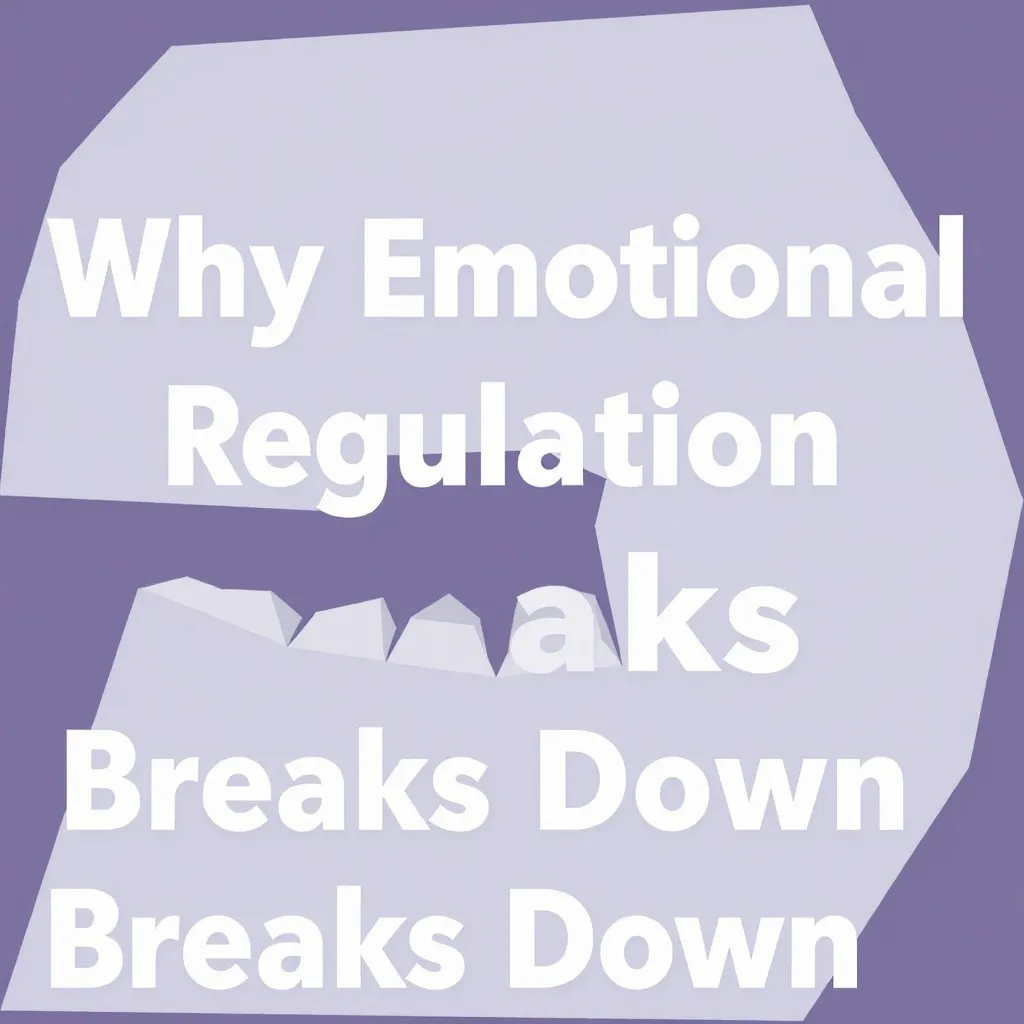Introduction
Sleep is more than just rest—it is a biological reset mechanism, particularly for emotional balance. During sleep, the brain processes emotions, consolidates memories, and regulates mood-related chemicals. For individuals struggling with emotional instability, trauma, or mood disorders, improving sleep may be the key to long-term emotional health.
Genetic Learning (GL) introduces a powerful, science-backed method to reinforce emotional regulation by activating specific neural pathways before and during sleep. This article explains how Genetic Learning can enhance emotional resilience by rewiring the subconscious brain systems responsible for emotional control.

Why Emotional Regulation Breaks Down
Emotional dysregulation is often caused by:
-
Overactivation of the amygdala (the fear and stress center)
-
Underactivity in the prefrontal cortex (the rational thinking area)
-
Hormonal imbalances involving cortisol, serotonin, and melatonin
-
Chronic sleep disruption
Without deep, quality sleep, the brain loses its ability to manage emotional input, which leads to:
-
Overreaction to stress
-
Anxiety or depression
-
Poor impulse control
-
Difficulty focusing and socializing

The Role of Sleep in Emotional Reset
During REM sleep and slow-wave sleep, the brain detoxifies emotional residue, restores hormone balance, and strengthens neural circuits related to self-control and empathy.
However, if sleep is shallow or disturbed, these processes are compromised. This is where Genetic Learning steps in—preparing the brain for optimized emotional reset during sleep.

How Genetic Learning Enhances Emotional Regulation
-
Pre-Sleep Neural Conditioning
GL exercises calm the fear response system by engaging subconscious logic and structured thought, reducing emotional volatility before bed. -
Activation of HBDNF and HBNGF
These neurotrophic factors, stimulated by GL, support the development of new, emotionally stable neural pathways. -
Synaptic Cleansing During Sleep
When GL is practiced in the evening, the brain enters a synchronized state of cleansing during sleep, releasing stress and emotional overload. -
Strengthening the Prefrontal Cortex
Continuous practice of GL enhances the brain’s executive function region—resulting in better emotional decision-making and impulse control.
Real-World Application: Anxiety to Calm in 21 Days
A 35-year-old woman experiencing chronic anxiety and emotional burnout began Genetic Learning training nightly. After three weeks:
-
Her sleep became deeper and uninterrupted
-
She reported feeling “lighter and clearer” emotionally
-
Her reaction to daily stressors significantly decreased
Benefits at a Glance
-
Reduced emotional reactivity
-
Improved tolerance to stress
-
Faster recovery from emotional triggers
-
Increased self-awareness and empathy
-
Long-term protection against burnout and mood disorders
Conclusion
Emotional balance isn’t just learned—it’s wired into the brain, especially during sleep. Genetic Learning provides a revolutionary way to activate emotional healing by targeting the subconscious mind and preparing it for overnight transformation.
For anyone seeking emotional clarity, stability, and inner peace, GL is more than a method—it’s a nightly renewal process rooted in science, structure, and self-awareness.
Discover More with Sleeping Order
Introduction
Sleep is more than just rest—it is a biological reset mechanism, particularly for emotional balance. During sleep, the brain processes emotions, consolidates memories, and regulates mood-related chemicals. For individuals struggling with emotional instability, trauma, or mood disorders, improving sleep may be the key to long-term emotional health.
Genetic Learning (GL) introduces a powerful, science-backed method to reinforce emotional regulation by activating specific neural pathways before and during sleep. This article explains how Genetic Learning can enhance emotional resilience by rewiring the subconscious brain systems responsible for emotional control.

Why Emotional Regulation Breaks Down
Emotional dysregulation is often caused by:
-
Overactivation of the amygdala (the fear and stress center)
-
Underactivity in the prefrontal cortex (the rational thinking area)
-
Hormonal imbalances involving cortisol, serotonin, and melatonin
-
Chronic sleep disruption
Without deep, quality sleep, the brain loses its ability to manage emotional input, which leads to:
-
Overreaction to stress
-
Anxiety or depression
-
Poor impulse control
-
Difficulty focusing and socializing

The Role of Sleep in Emotional Reset
During REM sleep and slow-wave sleep, the brain detoxifies emotional residue, restores hormone balance, and strengthens neural circuits related to self-control and empathy.
However, if sleep is shallow or disturbed, these processes are compromised. This is where Genetic Learning steps in—preparing the brain for optimized emotional reset during sleep.

How Genetic Learning Enhances Emotional Regulation
-
Pre-Sleep Neural Conditioning
GL exercises calm the fear response system by engaging subconscious logic and structured thought, reducing emotional volatility before bed. -
Activation of HBDNF and HBNGF
These neurotrophic factors, stimulated by GL, support the development of new, emotionally stable neural pathways. -
Synaptic Cleansing During Sleep
When GL is practiced in the evening, the brain enters a synchronized state of cleansing during sleep, releasing stress and emotional overload. -
Strengthening the Prefrontal Cortex
Continuous practice of GL enhances the brain’s executive function region—resulting in better emotional decision-making and impulse control.
Real-World Application: Anxiety to Calm in 21 Days
A 35-year-old woman experiencing chronic anxiety and emotional burnout began Genetic Learning training nightly. After three weeks:
-
Her sleep became deeper and uninterrupted
-
She reported feeling “lighter and clearer” emotionally
-
Her reaction to daily stressors significantly decreased
Benefits at a Glance
-
Reduced emotional reactivity
-
Improved tolerance to stress
-
Faster recovery from emotional triggers
-
Increased self-awareness and empathy
-
Long-term protection against burnout and mood disorders
Conclusion
Emotional balance isn’t just learned—it’s wired into the brain, especially during sleep. Genetic Learning provides a revolutionary way to activate emotional healing by targeting the subconscious mind and preparing it for overnight transformation.
For anyone seeking emotional clarity, stability, and inner peace, GL is more than a method—it’s a nightly renewal process rooted in science, structure, and self-awareness.
Discover More with Sleeping Order
Share this post
Subscribe to our newsletter
Related posts
Genetic Learning for Children: Building Strong Brains and Better Sleep from an Early Age
Introduction Childhood is the most critical period for brain development. It’s when neural pathways are
The Sleep Architecture Explained: How Genetic Learning Optimizes Each Sleep Stage
Introduction Sleep is not a single state—it’s a cycle made of several distinct stages, each
Chronotypes and Genetic Learning: Tailoring Sleep and Brain Training to Your Internal Clock
Introduction Not everyone is wired to wake up early. Some feel energized at dawn,
Share this post
Subscribe to our newsletter
Related posts
Genetic Learning for Children: Building Strong Brains and Better Sleep from an Early Age
Introduction Childhood is the most critical period for brain development. It’s when neural pathways are
The Sleep Architecture Explained: How Genetic Learning Optimizes Each Sleep Stage
Introduction Sleep is not a single state—it’s a cycle made of several distinct stages, each
Chronotypes and Genetic Learning: Tailoring Sleep and Brain Training to Your Internal Clock
Introduction Not everyone is wired to wake up early. Some feel energized at dawn,



